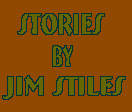

I like to get high. I've always been like this. Even as a kid in Kentucky, I could not stand being a lowlander. In those days, I used to paddle my canoe (illegally) on the Salt River as it wound its way through the Fort Knox Military Reservation. But by afternoon, I grew tired of watching live ammunition fly over my head and explode in the impact area east of the water. So I'd bring the boat ashore and fight my way through the tangle of wild grapevines and poison ivy to the top of Buzzard's Roost, 300 feet above the river, and observe the military fireworks from on high.
But I just couldn't get high enough. I felt absolutely stifled in the closed-in and smothering green forests. Something had to be done. The West changed all that of course. And for the last 20 years, I've been seeking out the high spots for no other reason than I just like the view.
None of these ascents was the kind that could make an adrenalin junkie happy. I've never much cared for the technical aspects of climbing. All that rope and hardware was just too intimidating. And I'm scared of precipitous heights. How some of my friends can stand on the brink of eternity and stare into the depths without feeling the least bit dizzy is beyond me. I get queazy watching them.
I've never even particularly liked walking uphill. As my old friend Joe Stocks once said at a public hearing, "Why would anyone in their right minds enjoy carrying a 50 pound pack on their back and walking all day?" Joe did that in Vietnam and that was all the serious hiking he needed for a lifetime.
Still, the only way my conscience allows me to get to the top of the hill when there is no road is with my feet. And so I reluctantly use them, sore and blistered as they may become, to get to where I want to go. Once I reach my viewpoint, I am more than content to just sit there along the ridgeline or the top of the mountain or the edge of the canyon and stare blankly at the scene beneath my feet and spit sunflower seeds and sip water for the better part of an afternoon. I've frustrated many a fellow hiker who, as part of their aerobics workout insisted that we maintain a high pulse rate for a designated period of time.
I couldn't be budged. Jog in place, I suggested. Or abandon me, for that matter. Just don't ask me to move once I've settled into my new viewpoint. To find the right spot facing the right direction, where I can reach my pack without disrupting my gaze is all that I ask. At that moment, I am as content as I ever can be.
But what is it about the view? From that height, the scene is mostly static. Nothing below seems to move. I could just as well look at a photograph or go to the IMAX theater. But I always remember what the poet said:
I have spread my dreams beneath your feet; Tread softly because you tread on my dreams.
From up there, if I squint just right, and the light is just right, and my imagination is willing to play a few tricks, I can see all the country I love, the way I want it to be. Unspoiled. Silent. Even forgotten. Being born 50 years too late doesn't bother me when I'm up there, because as far as I'm concerned it is 50 years ago.
That felt particularly true to me last week. I was wandering the foothills of a favorite mountain of mine, first in the Scum-mobile on old jeep roads, then on foot, with no particular destination in mind. I still don't understand why people feel such a great need to know where they're going, why they insist on being so damn destination-oriented, but that's an old bellyache of mine and not worth repeating again (for now). But in the process of not knowing where I was going, I stumbled upon the most extraordinary campsite I have ever seen.
On an exposed point of ground, with an unobstructed view, I came upon a cluster of boulders. Granitic boulders as big as a house. They had been sculpted by wind and rain over countless millennia into fantastic shapes, creating alcoves and caves and shelves of every size and form imaginable. On the north side of the big rock, the faded remains of two pictographs, a human figure and a bighorn, still clung tenaciously to the weathered stone. And nearby a cowboy had left an inscription and a date that left more of an impression on me than the ancient rock painting.
It was the date that caught my eye: December 6, 1941. What this cowboy was doing in the high country on that Saturday afternoon is long forgotten by now. But whoever he was and why ever he was there, the date he left behind had more significance than he could have known.
The next day, the Japanese launched a surprise attack on Pearl Harbor and thrust this country into World War II. Everything that has happened to us since then goes back to that morning. It is one of those watershed moments in history where one era closes and another begins. Even here in what was the most isolated section of the United States, the race to build an atomic bomb before Hitler's scientists could annihilate us, eventually led to the uranium boom, a rush of people to SE Utah, and the construction of thousands of miles of roads and jeep trails. Where would recreationists be today without Tojo, Hitler and J. Robert Oppenheimer?
Whoever the cowboy was that sat in that alcove and scratched his initials in the rock looked out over the same land that I beheld for the first time last week. But to see it and feel it the way he did, I really had to squint.
And where was this penultimate campsite that I even dream about from time to time?
I can't remember.
Not long after reluctantly leaving my favorite campsite at Big Rock, I found myself returning to a place I first saw more than 20 years ago. Since the highway department built the glorious new Bicentennial Highway to Lake Powell in the mid-70s, much of the old Highway 95 has been abandoned and allowed to crumble. That's particularly the case where the road snaked its way down the side of Comb Ridge and into the shadows of giant cottonwoods that grew in the wash below. The road was empty then, as it was most days.
So, feeling a little nostalgic one day (does it show?), I made a sentimental journey to the top of the Comb Ridge Dugway. The one lane road washed out completely to vehicles years ago; yet the area shows signs of abuse and overuse everywhere. From garbage to off-road jeep and bicycle use, the place was pretty hammered. Still on this particular morning, the air was clear, the birds were singing, and I had the place to myself.
Or at least I thought I did. I had walked several hundred feet down the old road when I heard something strange. Only the sound of my footsteps and the song of a canyon wren had disturbed the silence of this lovely morning when I thought I heard the sound of group laughter and applause.
I took a few more steps and I heard it again. To be honest, it sounded like the laughtrack on "Leave it to Beaver," and I wondered for awhile if my efforts to project myself into the past through wishful thinking had finally paid off. But I knew there must be a more logical (and grimmer) explanation. I pulled out my binoculars and waited for the sounds again.
They were definitely coming from Comb Wash, almost a mile away. I looked through the glasses and saw a colorful sight. There must have been 50 to 75 people, dressed in a wonderful assortment of mauve, teal, turquoise and taupe, all clapping and laughing enthusiastically for...well, I couldn't see why they were clapping actually. All I knew for sure was that scores of humans in dozens of cars were crammed into what used to be a beautiful little oasis called Comb Wash.
I became livid. I don't know why I took this particular incident so personally. I've been watching this kind of destruction for decades. But somehow it rankled more than usual. And I decided to go down there and find out who this mob of people was and why they chose this sacred location to do group laughter and applause.
I made my way back to the new road, drove through the cut in Comb Ridge and turned on to the dirt road that led to their camp. Closeup the sight was worse than from afar. A big Ryder truck provided support for the cooking operation which looked prepared to feed a small army. Handsome young men and women with appropriate outfits chatted pleasantly with each other as they loaded their cars with state of the art camping equipment.
I walked up to a man in his thirtys probably. He was shaking the sand out of his shoes, sitting on the tailgate of his Toyota.
"Excuse me," I said.
The man looked up and nodded serenely.
"Well," I said, "I was just wondering who the hell are you people? Is this some kind of group?"
"No," he replied.
"It isn't?" I said looking around. "Well, why are all of you here?"
He cleared his throat and said, "We're trying to develop a more positive attitude about ourselves."
"Excuse me?" I said.
"We're trying to get to know ourselves better," he explained, mildly exasperated that I even had to ask. "Maybe you should talk to our leader," he added and pointed vaguely toward the cook tent.
Eventually, I found their Leader, or to be exact, he found me. I had begun to draw stares as I both snapped photos and grumbled just slightly under my breath, and I think I got reported.
Jim Muir (no relation to John) was a nice man and was concerned with my concerns ("I can certainly understand how you feel." or "I can sure see your point."), but ultimately he felt his program was a good one.
"These are professionals," he explained. "Doctors, lawyers...some of them have never camped out a day in their lives. This is giving them a whole new way of looking at this planet and their own lives. We are increasing their consciousness."
"Sure," I nodded. "But at what cost? They can't be taught environmental ethics and the fragile nature of the desert in one or two eight hour workshops. Besides, what kind of wilderness experience is this anyway?"
"I'm glad you asked me that," he said smiling. "They only spend part of their time here at the base camp. On Tuesday, we loaded them into the trucks, drove them up the canyon, dropped them off individually, and made them fast for 72 hours." Mr. Muir could not have been prouder.
Fifty hungry scared lawyers, dentists, and proctologists roaming the canyon, what used to be a sacred place, for three days and nights. I shuddered at the thought of it.
I thanked Mr. Muir for his time. He was kind enough to at least listen to my tirade. As I walked back to my car, though, it occurred to me that we had gone yet another step in marketing the very beauty of the land. We'd gone beyond promoting a recreational sport that requires equipment and an outfit. We have now found a way to market the very spiritualistic aspect of the outdoor experience. We've packaged the "Meaning of Life." So you want to increase your consciousness? The next bus leaves in 15 minutes.
When I got back to Moab, I called directory assistance for the company in Idaho that sponsored this little adventure in Comb Wash. A soothing voice on the other end answered the phone. I explained to her that I had by chance met this wonderful group of enlightened people in southern Utah. How could I be a part of this learning experience I inquired?
Easy. One thousand eight hundred and fifty dollars for the five-day experience. And for three days they don't even feed me. They say the road to salvation is difficult and as narrow to walk as the razor's edge. But not if you bring your Gold MasterCard...Don't leave base camp without it.
Copyright 1994 The Canyon Country Zephyr








